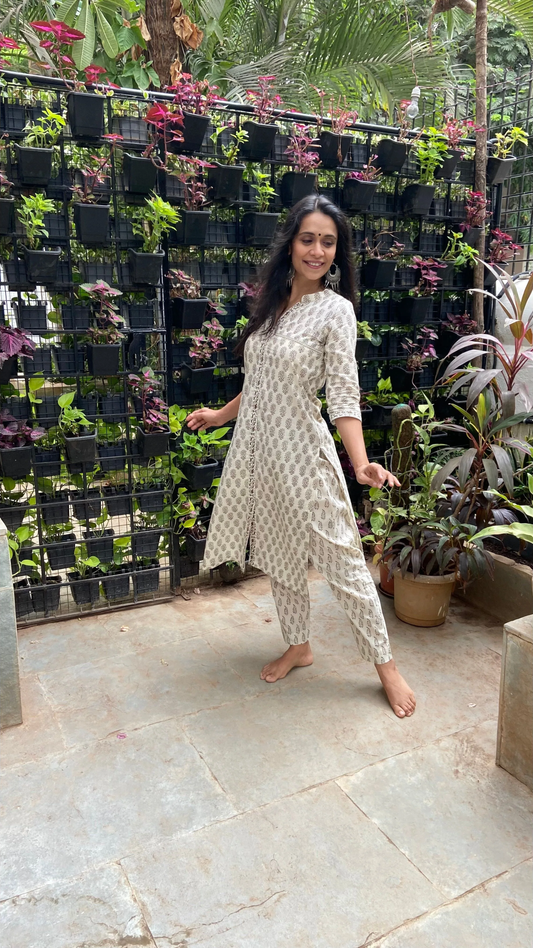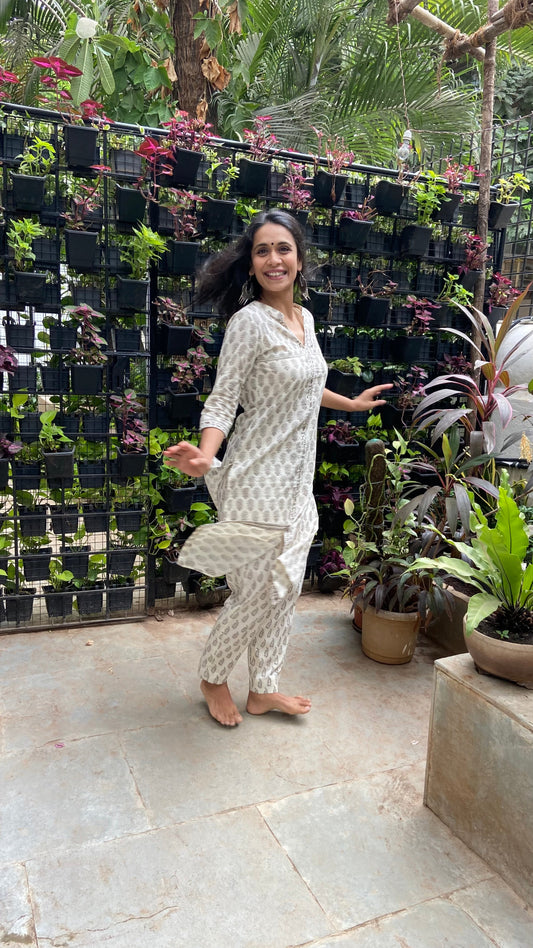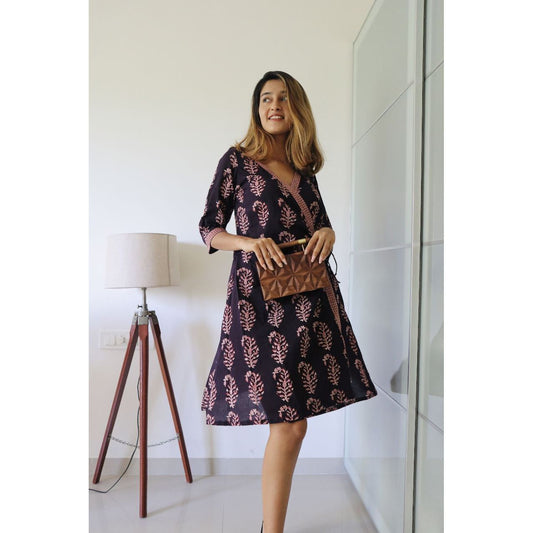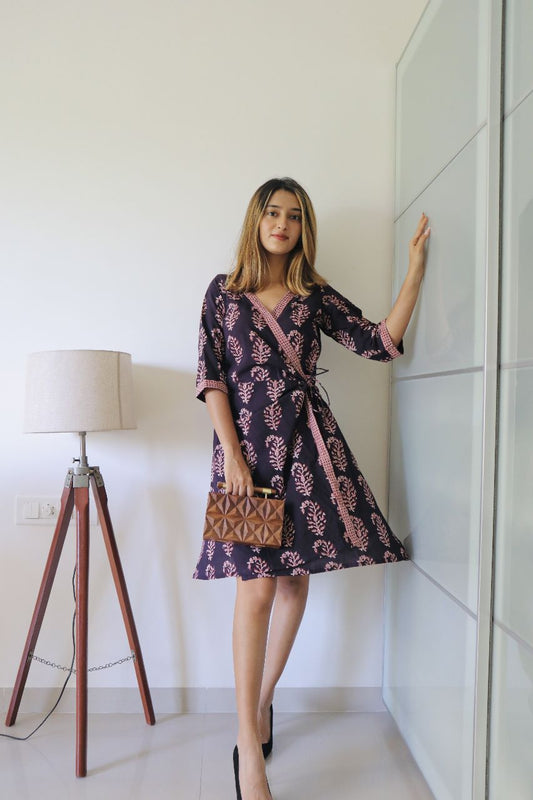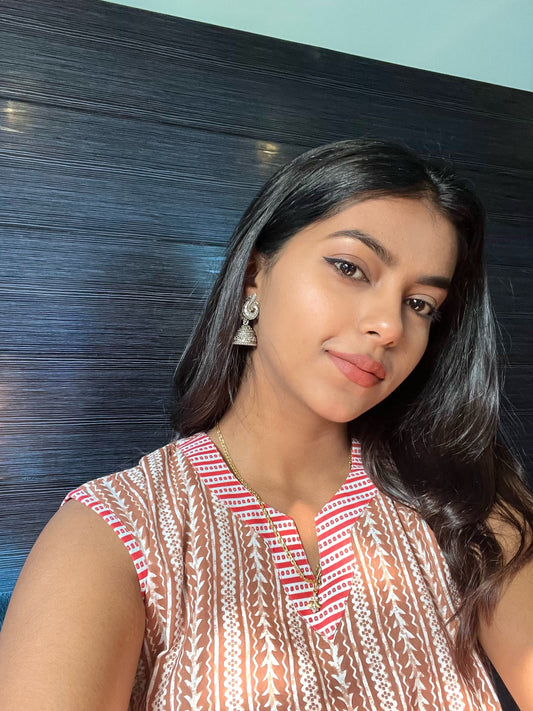Preserving the beauty of hand-carved wooden blocks and natural dyes
On the outskirts of Bagh village, in a dark silo, one can be sure to be engulfed by reams of cloth, dripping with wooden carving blocks from stacked cupboards. With a slight ray of sunlight shadowing the cloth material, Farukh Khatri can be seen printing beautiful carvings of mosaics on the fabric, precise to the last dot; without a single crease or complaint.

With the world as its runway, another prevalent block printing technique that has stood the testing waters of the competitive fashion industry is Bagh. Hailing from the soils of Manavar, Madhya Pradesh, where the Khatri community comprised Chippas. Bagh printing basically involves wooden blocks that are carved into motifs that represent flora such as Jasmine, Mango, Mushroom and many more. Some of them are also stimulated by Taj-Mahal embellished Jaali or net work. Other inspirations are also drawn from the landscapes and geometric figures.
Bagh’s exclusive art of Thappa Chappai (block printing) with natural dyes, has advanced from a rudimental tribal craft to an irreplaceable fragment of the cultural distinctiveness of Madhya Pradesh. The virtuosity of these artists comes down to the exceptional core values that they believe in; some of them still use the blocks which are hundred to two hundred years old.
The acute element of Bagh, differentiating it from the others, is that the motifs elicit various sentiments in the tranquillity of the prints. Nandana, Tendu, Leheria and Phool buta are the few local motifs that find its use.
The main component of the entire process is definitely the Bilals or the blocks. There are two basic divisions in their types; one being made up of a single wooden piece; being a little expensive while the other is prepared with two wooden pieces allowing it to be sold at a slightly cheaper rate than the former. Due to the long lasting nature of the single wooden piece bilal, the khatris are inclined to purchase that for a higher quality end product. Two of the finest wood are from Balsar, Gujarat (Sagwan wood) and Farakkabad, Uttar Pradesh (Shisham wood).
The procedure of block making comprises of craftsmen using a hand drill arrangement that involves a bow called Kamthi along with a driller named as Saarardi to drill out intricate, larger patterns on the dense Sagwan or Teak wood as it provides perfect base for carving intricate motifs which doesn’t absorb water. For finer cravings and finishing, a variety of chisels of various shapes and sizes are used. An intricate block takes a week’s time to be developed completely whereas a basic block takes somewhere around two-three days. For protection against insects and warping, they are absorbed in castor oil for yet another three days; making it an essential process given these blocks are supposed to be subjected to natural dyes consistently.

Previously known as alizarin, the Bagh block production is an ancient technique of repeated washing, drying and printing which required dedication and impeccable perfection to its core. To get rid of the starch and impurities, the cloth is washed clean and severely beaten against river stones. This process is termed ‘Khara’.
Mengni is the next crucial stage where the cloth/fabric is brought back to the workshop and dipped in a particular solution for an entire night, after which it is put out to dry by spreading on the floor of stones, out in the open. To give an off-white or yellow hue background to the cloth, the material is treated with something called Harara. It also strengthens the shade of black and red that are later printed. The fabric turns yellowish after repetition of this process.

Followed by this is the printing stage, where the sample at hand is punctiliously carved with motifs using the block wood, the average amount of time depending on various factors like the design as well as the skills of the artisan; keeping the fabric for a maximum of two weeks for colour absorption. To avoid the accumulation of stains plus smudged; this course is followed by swiftly drowning the printed fabric in the river to remove excessive color.
Boiling in the solution of Dhavda flower for a lustrous finish and Alizarin for colour protection for six straight hours, this cloth is finally dried. The final stage is called Tarai, where the fabric is re-washed three-four times and dried again to set the colours permanently. Thus, creating the marvel that we called the Bagh prints.

Usually the trend of hundreds and thousands of piles of coloured fabrics; striking silk and cotton are casually bundled up or thrown over the clothesline; an occasional pattern of bottle green, blue and purple breaking the pattern of white, black and maroon can be witnessed at a Bagh workshop. Bagh prints are an all-time desired and a darling choice for the Indians today, chiefly due to the comfort that it offers to the skin. Besides cotton, a lot of other materials such as Silk, Crepe etc are in trend now. The aspect of eco-friendliness that is involved in the manufacturing process makes it an international attraction irrespective of the shortcoming of being a slow methodology.


